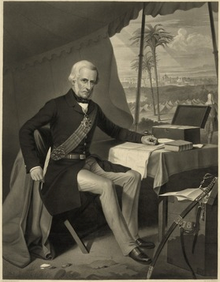Our Local Road names reflect the imperial history that was popular with our planners at the time they were adopted by the Council: as the middle classes, who were in their first generation of running Bromley, were very enthusiastic about Empire, and committed Christians, the roads were christened accordingly. They had a fascination with their heritage from the Puritan movement, and they promoted causes such as Temperance Movement. This was the era with the rise of the Baptist and Methodist movements, and when the Salvation Army first began its extensive work. Church-going was a passion at this time; just look at the number and capacity of the local churches built at this period, and compare them with the amount of housing from that time. They’re only equalled by the number of pubs!
They probably hoped that by naming Havelock Road after a popular Christian and temperance man, they would give the somewhat unruly inhabitants something to aspire to….
Note, in the mid-Victorian era the turnpike road (now the A21) was along Shooter’s Common was lined (only on the NE side facing the common) with suburban villas, “occupied by tea dealers, cotton traders and members of the stock exchange” according to Matthew Greenhalgh’s thesis.
Havelock Road
Henry Havelock was a famous Victorian Baptist general in India and Burmah, and pioneer of modern army chaplaincy, and was very popular at the time; not just are many roads and streets named after him, but there’s a town in America and his statue on a plinth in Trafalgar Square.
His biographies were best sellers in the decades after his death, one by his brother in law sold 46,000 copies, considered remarkable at the time. A typical title was: General Sir Henry Havelock, The Soldier and The Saint: or Two Heroes in One. General Havelock’s life was seen as a lesson in Christianity, Honour and Duty; there were popular musical compositions commemorating him from the India Mutiny: for example the Havelock March and Havelock Polka Militiare.
Henry Havelock came originally from Sunderland, his family then moved to Ingress Park, Greenhithe (Kent), and he attended Dartford Grammar School[1] (as a parlour boarder), then Charterhouse School until he was 17. He entered the Middle Temple in 1813,to study law, but losing his funds, he obtained on 30 July 1815, at the age of 20, a post as second lieutenant in the 95th Regiment of Foot, Rifle Brigade.
At this stage he started to diligently study military history and the art of war. Then he went to see active service in India, with the 13th Regiment (Light Infantry) and therefore studied the Persian and Hindustani languages. It was on this journey to India that Henry Havelock rediscovered his faith.
In the First Afghan War in 1839, Havelock was aide-de-camp to Willoughby Cotton at the capture of Ghazni, on 23 May 1839, and was then involved in a string of successes: the occupation of Kabul, the passage of the defiles of the Ghilzais in 1840, lifting the siege at Akbar Khan, promoted to Deputy Lieutenant-General and releasing British prisoners and then Jagdalak, Tezeen, Istalif, and then the Gwalior Campaign as Persian interpreter to Sir Hugh Gough, and distinguishing himself at Maharajpur in 1843, and the Sikh Wars at Mudki, Ferozeshah and Sobraon in 1845.
At this time he would have made his name known to the British public, as he used his spare time to produce analytical reports about the skirmishes and battles in which he was involved. These writings were returned to Britain and were reported on in the press of the day, and wer followed by a series of promotions.
 |
 |
After returning to England and two years “church work” with the Baptists (involving himself in the Stepney Baptist Academy), he returned to India in 1852 with further promotions to become Adjutant-General to the British Army in India in 1857. Then he won successes in the Anglo-Persian War (action at Muhamra against Nasser al-Din Shah), then in the Indian Rebellion in Allahabad, then victories in Lucknow and Cawnpore. Despite being in his 60’s and outnumbered, he defeated all rebel forces in his path, as the years of campaign experience and his studies of the theories of war won him the reputation as a great military leader. He lifted the siege of Lucknow, but died a few days later on 24 November 1857 of dysentery, brought on by the anxieties and fatigue connected with his victorious march and with the subsequent blockade of the British troops. He lived long enough to receive news that he was to be created a Baronet for the first three battles of the campaign; but he never knew of the major-generalship which was conferred shortly afterwards.
The plinth’s dedication reads: To Major General Sir Henry Havelock KCB and his brave companions in arms during the campaign in India 1857. “Soldiers! Your labours, your privations, your sufferings and your valour, will not be forgotten by a grateful country” H. Havelock. In 2003, there was major controversy when the then mayor of London, Ken Livingstone suggested that the Trafalgar Square statue, together with that of General Charles James Napier, be replaced with “more relevant” figures.[4]
.
1897 Wellington, Marlborough, Nelson, Raglan?
http://en.m.wikipedia.org/wiki/Benjamin_Bloomfield,_1st_Baron_Bloomfield
http://en.m.wikipedia.org/wiki/Henry_Addison
http://en.m.wikipedia.org/wiki/George_William_Addison
http://en.m.wikipedia.org/wiki/Charles_Greenstreet_Addison
6,933 total views, 1 views today
